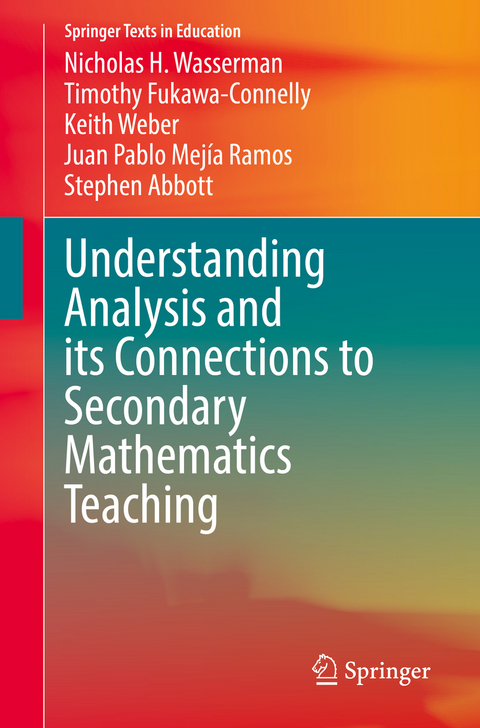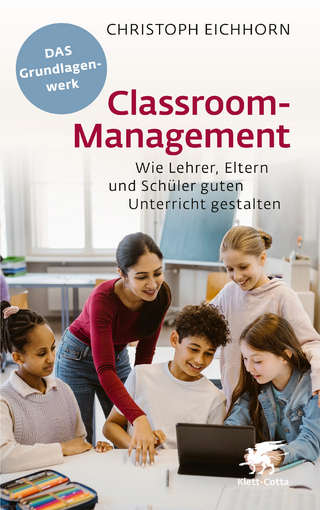
Understanding Analysis and its Connections to Secondary Mathematics Teaching
Springer International Publishing (Verlag)
978-3-030-89197-8 (ISBN)
Getting certified to teach high school mathematics typically requires completing a course in real analysis. Yet most teachers point out real analysis content bears little resemblance to secondary mathematics and report it does not influence their teaching in any significant way. This textbook is our attempt to change the narrative. It is our belief that analysis can be a meaningful part of a teacher's mathematical education and preparation for teaching. This book is a companion text. It is intended to be a supplemental resource, used in conjunction with a more traditional real analysis book.
The textbook is based on our efforts to identify ways that studying real analysis can provide future teachers with genuine opportunities to think about teaching secondary mathematics. It focuses on how mathematical ideas are connected to the practice of teaching secondary mathematics-and not just the content of secondary mathematics itself. Discussions around pedagogy are premised on the belief that the way mathematicians do mathematics can be useful for how we think about teaching mathematics. The book uses particular situations in teaching to make explicit ways that the content of real analysis might be important for teaching secondary mathematics, and how mathematical practices prevalent in the study of real analysis can be incorporated as practices for teaching.This textbook will be of particular interest to mathematics instructors-and mathematics teacher educators-thinking about how the mathematics of real analysis might be applicable to secondary teaching, as well as to any prospective (or current) teacher who has wondered about what the purpose of taking such courses could be.
lt;p>Nicholas H. Wasserman is Associate Professor of Mathematics Education at Teachers College, Columbia University. Previously, he taught mathematics for six years at the secondary level, in both a large public school in Austin and a private school in Manhattan. His scholarly interests focus on secondary teachers' mathematical knowledge and development, particularly how advanced mathematics can be relevant for teachers and influence their secondary classroom teaching and practice.
Tim Fukawa-Connelly is Associate Professor of Teaching and Learning in the College of Education and Human Development at Temple University. His scholarly interests include teacher development, the relationship between what happens in mathematics classrooms and student learning, and hiking to as many waterfalls as possible.Keith Weber is Professor of Mathematics Education at Rutgers University. His scholarly interests include how students and mathematicians reason in advanced mathematics and the relationship between mathematical activity and mathematical learning.
Juan Pablo Mejía Ramos is Associate Professor of Mathematics and Mathematics Education at Rutgers University, jointly appointed in the Department of Mathematics (within the School of Arts and Sciences) and the Department of Learning and Teaching (within the Graduate School of Education). He is mainly interested in mathematical argumentation and proof, particularly the ways in which university students and research-active mathematicians construct, read and present arguments and proofs in mathematics.Stephen Abbott is Professor of Mathematics at Middlebury College. His research interests include classical and functional analysis as well as an ongoing fascination with the intersection of mathematics and the arts. He has held visiting positions at Saint Olaf College and the University of Virginia, was editor of Math Horizons (published by the MAA) from 2008-14, and is the author of Understanding Analysis (Springer, 2015).
Chapter 1: Teaching Principles.- Chapter 2: Equivalent Real Numbers and Infinite Decimals.- Chapter 3: Sequence Convergence and Irrational Decimal Approximations.- Chapter 4: Algebraic Limit Theorem and Error Accumulation.- Chapter 5: Divergence Description and Criteria and Logic in Communication.- Chapter 6: Continuity and Definitions.- Chapter 7: Intermediate Value Theorem and Implicit Assumptions.- Chapter 8: Continuity, Monotonicity, Inverse Functions and Solving Equations.- Chapter 9: Differentiability and the Secant Slope Function.- Chapter 10: Differentiation Rules and Attending to Scope.- Chapter 11: Taylor's Theorem and Modeling Complex with Simple.- Chapter 12: The Riemann Integral and Area-Preserving Transformations.- Chapter 13: The Fundamental Theorem of Calculus and Conceptual Explanation.
| Erscheinungsdatum | 06.01.2022 |
|---|---|
| Reihe/Serie | Springer Texts in Education |
| Zusatzinfo | XVIII, 215 p. 83 illus. |
| Verlagsort | Cham |
| Sprache | englisch |
| Maße | 155 x 235 mm |
| Gewicht | 367 g |
| Themenwelt | Sozialwissenschaften ► Pädagogik ► Schulpädagogik / Grundschule |
| Schlagworte | Real analyses • Secondary mathematics teaching • supplemental textbook • Teaching principles for mathematics • Upgrading the Learning of Teachers in Real Analysis |
| ISBN-10 | 3-030-89197-6 / 3030891976 |
| ISBN-13 | 978-3-030-89197-8 / 9783030891978 |
| Zustand | Neuware |
| Haben Sie eine Frage zum Produkt? |
aus dem Bereich


